| Asplanchnella sieboldi; the long sausage-like vitellarium (Vt) is claerly visible. MD: gastric glands; Ma: stomach; GM: ovary (germinarium); Ne: nephridium; Em: embryo. DT: dorsal antenna. (1) |
| |
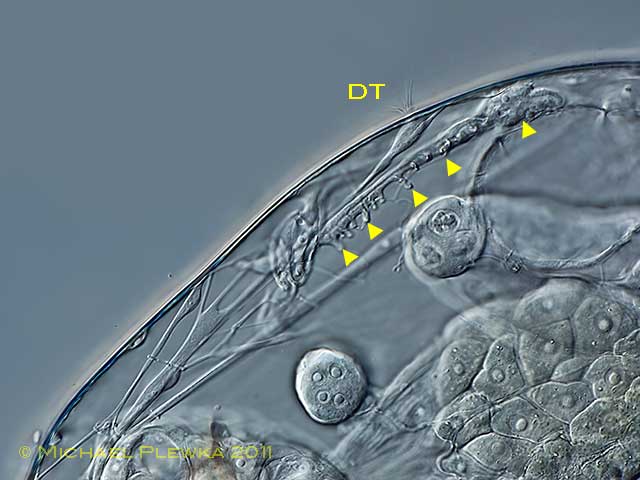 |
| Asplanchnella sieboldi; detail of the nephridium (yellow arrowheads) and the dorsal antenna (DT). (1) |
|
|
|
| Asplanchnella sieboldi; incudate trophi of two differents specimens. (1) |
| |
| Asplanchnella sieboldi is viviparous. The images below show a sequence of the birth: |
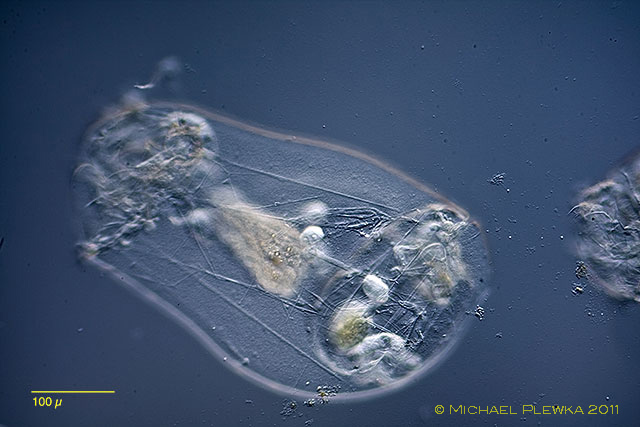 |
| t = 0sec |
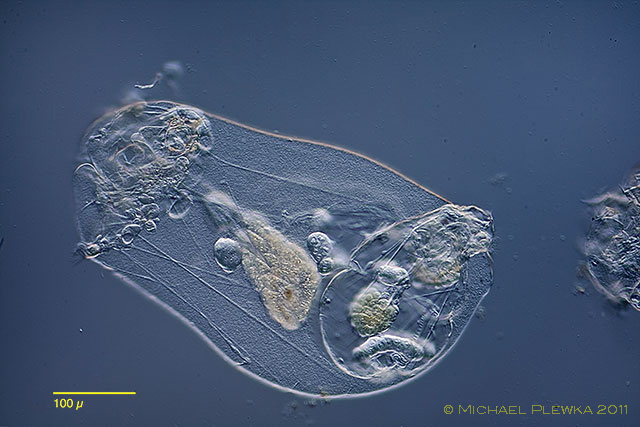 |
| t = 23sec |
 |
| t = 26sec |
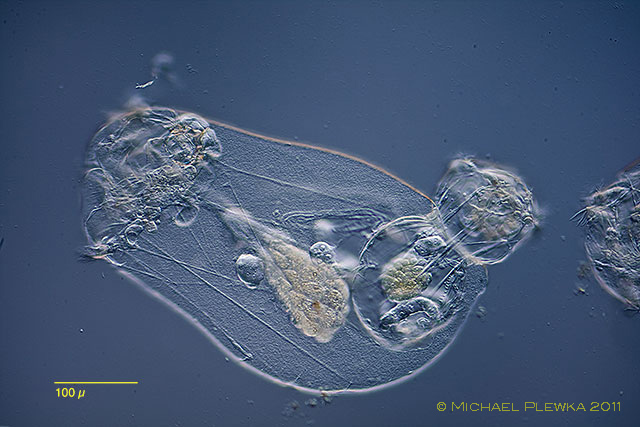 |
| t = 31sec |
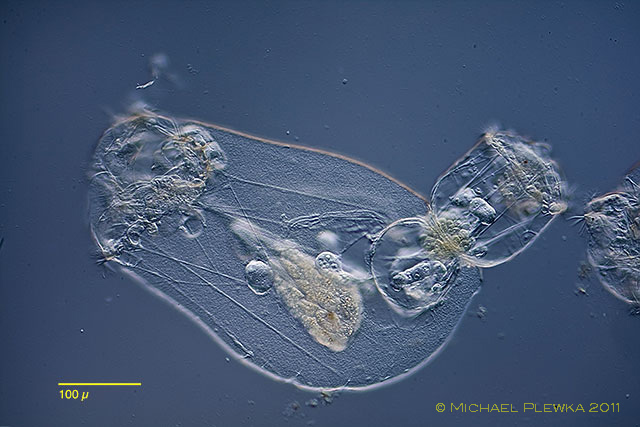 |
| t = 35sec |
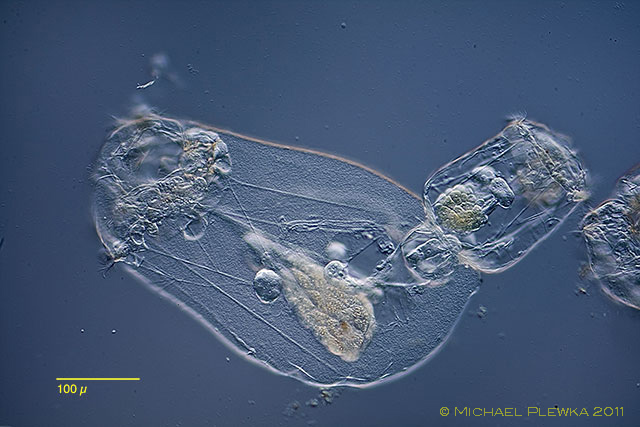 |
| t = 38sec |
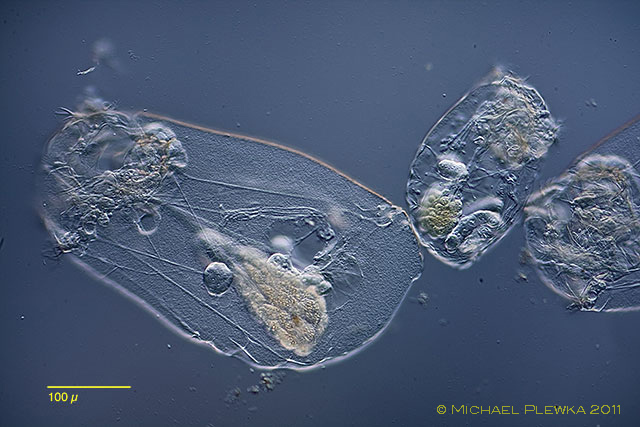 |
| t = 46sec |
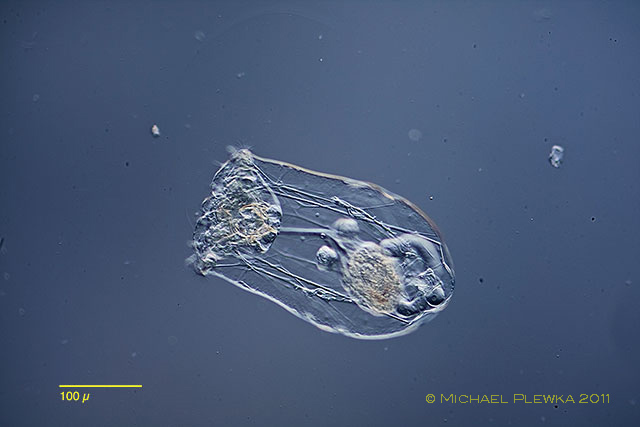 |
| t = 71sec |
| |
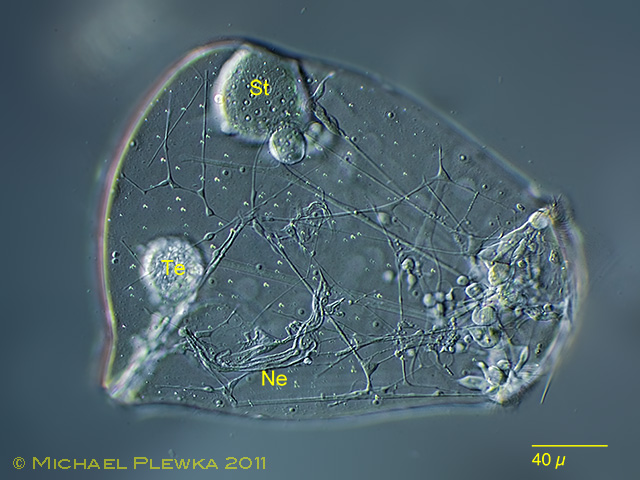 |
| Asplanchnella sieboldi; male specimen, focusl plane on the integument, so that the muscles are in focus. The nephridial system (Ne) is recognizable by the meandering path which leads into the bladder (Bl, see image below). St: rudimentary stomach; Te: testis. (23.08.2011) (1) |
| |
 |
| Asplanchnella sieboldi; male specimen; focal plane on the inner organs. Bl: bladder; ES: eyespot; St: rudimentary stomach; Te: testis; Pe: penis. |
| |
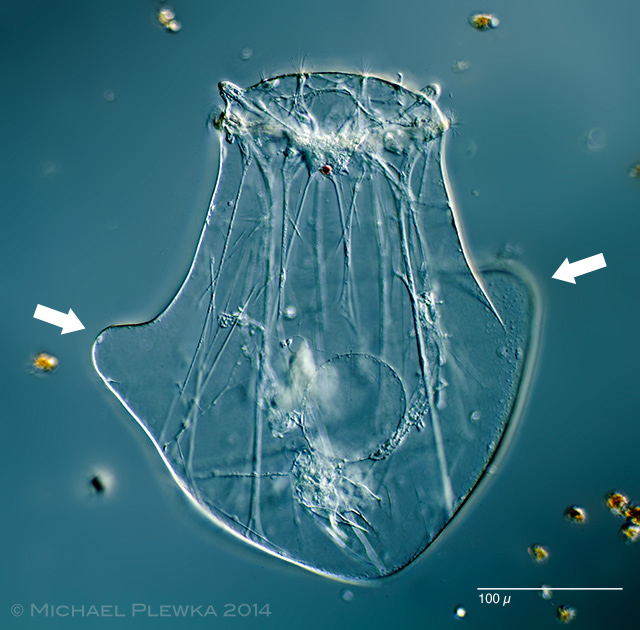 |
| Asplanchnella sieboldi var. cruciformis: if prey organisms get rare Asplachna populations tend to develop giantism, which leads to cannibalism. The descendants of these "campanulata" forms have a different shape with bumps (="cruciformis", arrows) which prevents the specimens from being eaten by their fellow species. (24.07.2014) (2) |
| |
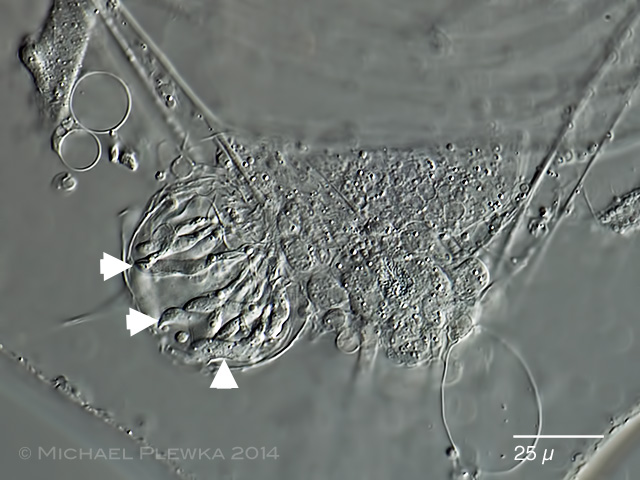 |
| Asplanchnella sieboldi var. cruciformis: the arrowheads point to some of the sperms in the testis. (2) |
| |
| |
|
Location (1): Sprockhövel, NRW, Germany; IG-Metall-Bildungszentrum; fire-fighting pond. |
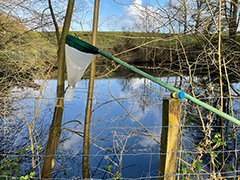 |
| |
| Habitat (1): plankton (click image to enlarge >>>) |
| |
| Date 22.08.2011 (1); 24.07.2014 (2) |
| |
|
|
|
|
|
| |
|
|